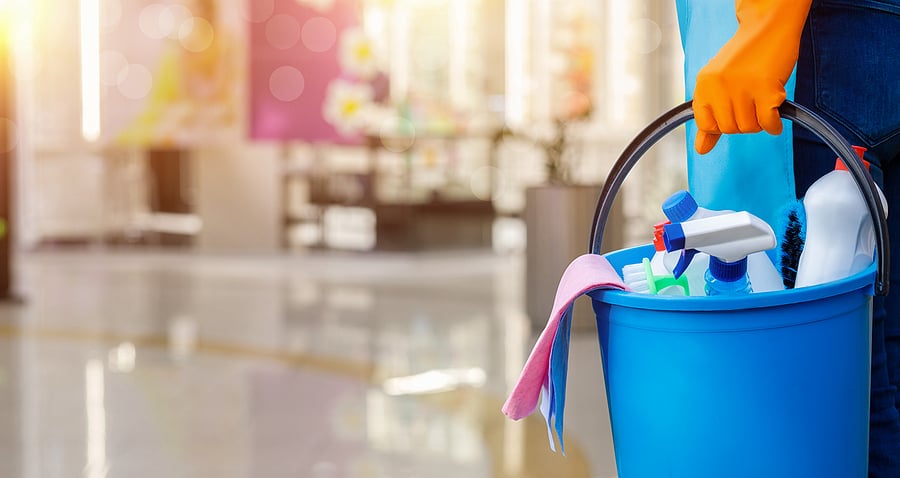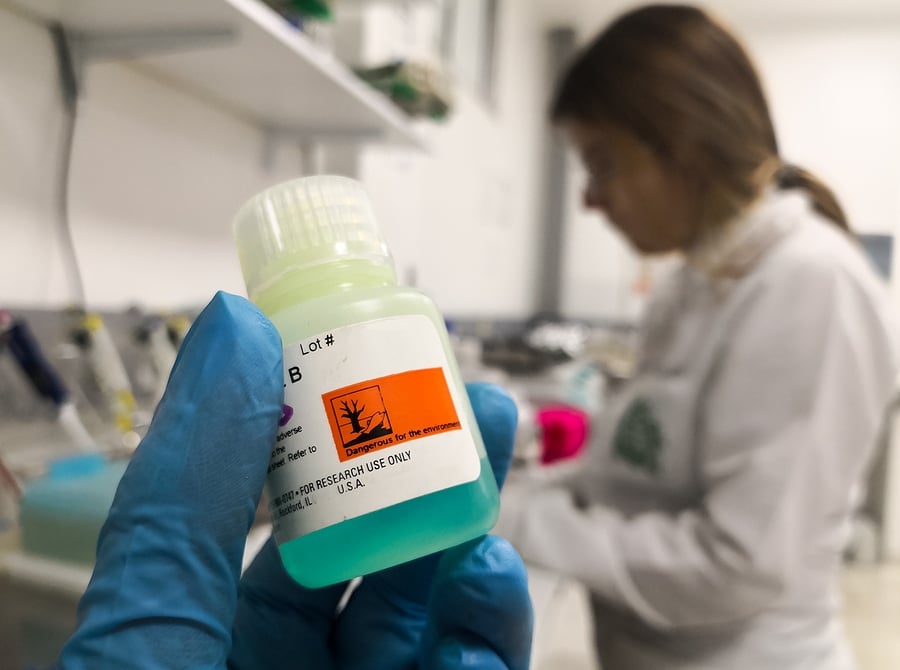Schools and COSHH Regulations
What is COSHH?
Initially created in 1999, COSHH stands for the Control of Substances Hazardous to Health Regulations 2002. The legislation governs an employer's duty to control any substances that pose a risk to health. It covers harmful exposure to chemicals, fumes, dusts and gases.
COSHH Risks for Schools
Hazardous substances of some sort are present in most schools - in the chemistry lab, design and technology lessons and also cleaning products. Employees and student should be familiar with the different COSHH symbols on the bottles and packaging of hazardous substances. Knowing this will help prevent accidents and understand the potential consequences if anyone does come into contact with them.
One of the most important ways to prevent COSHH-related accidents and incidents from happening is to ensure everyone is aware of the dangers of using hazardous substances as well as the dangers from incorrect handling. Teaching staff must also be trained in what to do in the case of a serious incident. In schools, management can reduce or prevent exposure to harmful substances by:
- Undertaking a COSHH risk assessment.
- Thoroughly investigating all potential health hazards on the school site.
- Publishing control measures to prevent risk and incidents or accidents harming to health.
- Making sure that these measures are implemented by appropriate staff.
- Ensuring that all control measures are efficient and in good working order.
- Providing training, information, and instructions for appropriate employees.
- Making sure that there is a plan in place for accidents, incidents and emergencies.
- Providing health monitoring and surveillance wherever necessary.
COSHH must be implemented throughout the entire school, not just in areas that hold harmful substances. However, areas of schools that may require special attention include:
Classroom Laboratories
The school laboratory is probably the most obvious place to start and precautionary measures must be in place to prevent an incident. In particular, the practical teaching activities in chemistry labs will frequently involve the use of chemicals, which may produce potentially hazardous substances, including fumes and gases.

Teaching staff must understand why and how to control hazardous substances in the practical teaching activities as well as relaying information to students before they have access to any substances. Pupils must always be supervised when using chemicals and a risk assessment will determine what type of PPE is required e.g. goggles, labcoats and protective gloves.
All hazardous substances should be kept locked in a separate store room. Teaching staff should sign in and out all substances and a log be maintained of the chemicals kept and used on school premises.
Design & Technology Classrooms
Hazardous substances are also likely to be present in design and technology (D&T) workrooms. On a daily basis a D&T teacher will be working with solvent-based products such as glue, paint and varnish, as well as producing dusts and fumes as a result of soldering, sanding or other fabrication processes. It’s important to understand the health risks, especially any long-term impact such as occupational asthma.
Using appropriate PPE such as goggles and visors can help prevent an incident or accident, another control measure may be to open windows and doors to classrooms or provide ventilation.
Cleaning Products
Potentially less obvious is the hazardous substances contained in school cleaning products. If children discover any cleaning chemicals, such as bleach, there is always a risk of an incident causing harm to themselves or others.
Cleaners must understand the dangers that the chemicals they use can pose to their health. They must also recognise that they are working in an environment with children so it’s especially important that they are cautious when using and removing chemicals from the school premises. Additionally, cleaning products should either be provided by the school or checked by a qualified member of staff before use.
School cleaners are often employed by an external company rather than the school. This can make the task of ensuring their training is up to date a challenge. The employer or nominated responsible person at the school must check all cleaners have the relevant COSHH training and knowledge. They are also responsible for ensuring the environment the cleaners are working in is safe. This includes ensuring that they have access to the necessary safety precautions, such as gloves.

Who is Responsible for COSHH in Schools?
The employer is responsible for ensuring the legal requirements of COSHH are followed in schools. In England and Wales, the local authority is considered the employer of community schools and voluntary controlled schools. The governing body is the employer of foundation schools and voluntary aided schools, while independent schools are controlled by either the governing body or proprietor. Academies and free schools are the responsibility of the Academy Trust.
Often, this responsibility is delegated to a senior member of school staff and it is their duty to carry out COSHH risk assessments, or to ensure they are undertaken. Employer responsibilities include:
- Preventing or controlling any exposure to hazardous substances throughout the school premises.
- Implementing and adhering to safety measures to protect workers and pupils from hazardous substances.
- Providing all employees with information, training, instructions, and PPE equipment wherever necessary.
- Making sure that all control measures are clean, in full working order, and well maintained.
- Creating and implementing procedures to deal with and report incidents, accidents and emergencies that involve hazardous substances.
- Ensuring that substances never exceed the Workplace Exposure Limit (WEL).
- Undertaking a COSHH risk assessment.
All employees have a duty to follow these precautionary measures and to help keep pupils safe from harm. Staff must be familiar with safe systems of work and understand the procedures that are in place to protect them and those around them. Any incidents or accidents involving hazardous substances that could impact on someone’s health should be reported immediately. Employee responsibilities include:
- Using facilities and control measures that are provided by their employer.
- Storing and wearing PPE equipment.
- Reporting any insufficiencies or defects apparent in control measures.
- Maintaining a high level of personal hygiene.
- 100% compliance with all instructions, training, and information provided.
- Removing any PPE that could cause harm or contamination prior to eating or drinking.
- Efficient use of showering, washing, and bathing facilities when required.
COSHH Risk Assessment
A COSHH risk assessment follows a similar format as standard risk assessments with a single emphasis on hazardous substances. It should :
- Identify all hazards.
- Decide who could be harmed and how.
- Evaluate all risks and decide which precautions to put in place.
- Record these findings and explore ways to implement them.
- Regularly review the assessment and amend accordingly.
A school environment is constantly changing so COSHH risk assessments should be reviewed at least annually to ensure that they are still valid and up-to-date. Also:
- when there has been a change in work procedure;
- if the substance is used for a different task;
- if a substance has changed, e.g. new MSDS received
- upon HSE direction; and following any adverse incident involving the substance or task.
Here is an example of school COSHH Risk Assessment template.
About Lisa Robinson
Lisa - word smith to the gods.
Tags: accident reporting


